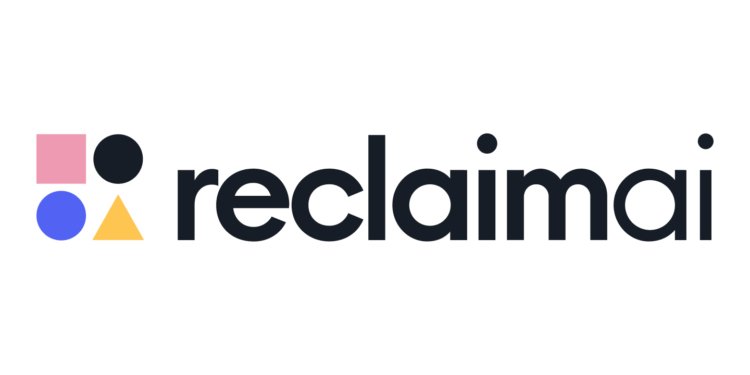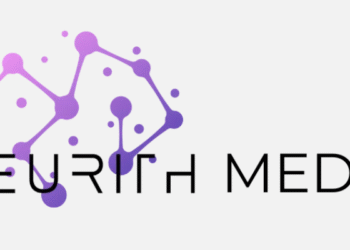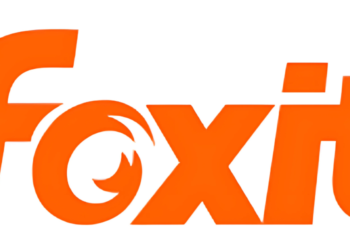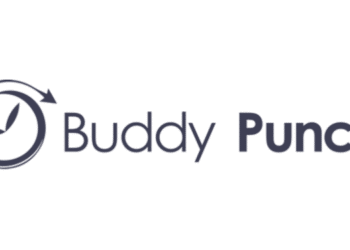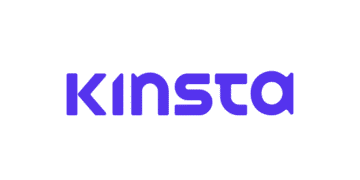What if your calendar could actually save you time instead of just scheduling it? Most professionals struggle with balancing tasks, meetings, and focused work. Traditional calendar apps simply don’t cut it for modern productivity needs.
Enter the market’s leading solution. Reclaim AI serves over 550,000 users across 65,000 companies as the #1 calendar application. It offers intelligent scheduling that protects your focus time while managing team coordination.
The best part? You can start with a completely free forever plan that requires no credit card. Your data remains private as the system doesn’t train on user information.
This comprehensive guide will help you evaluate if this is the right scheduling tool for your professional needs. We’ll examine features, pricing, and implementation strategies to support your decision-making process.
Key Takeaways
- The leading calendar app serves 550,000+ users across 65,000+ companies
- Completely free forever plan available with no credit card required
- Maintains user data privacy without training on personal information
- Intelligent scheduling protects focus time while managing team coordination
- Current END OF SUMMER DISCOUNT: 20% off with code SUMMER20 until September 30th
- Comprehensive comparison helps professionals make informed decisions
What is Reclaim AI? Understanding the Smart Scheduling Layer
Imagine having a personal assistant for your calendar. This assistant doesn’t replace your current system. Instead, it works on top of it to make everything smoother.
Reclaim AI acts as a smart layer. It integrates directly with your Google or Outlook calendar. You keep using the tools you already know and love.
How Reclaim AI Works With Your Existing Calendar
The system connects in minutes. It reads your current schedule and upcoming meetings. Then, it starts optimizing your available time automatically.
Think of it like a GPS for your workday. It finds the best routes for your tasks and habits. It constantly adjusts to new meetings and conflicts.
Your primary calendar remains the central hub. All changes sync back instantly. This seamless integration means no disruptive learning curve.
The Core Philosophy: Enhancement vs. Replacement
The tool believes in making your current setup better. It doesn’t force you to migrate your entire workflow. This philosophy saves time and reduces frustration.
Professionals get to keep their preferred tools. They simply add a layer of intelligent scheduling. The result is protected focus time and better task management.
This approach defends your schedule from overload. It automatically finds optimal slots for deep work. Your productivity gets a major boost without changing platforms.
Reclaim AI vs. Motion: Fundamental Approach Differences
Modern productivity tools follow two primary approaches: enhancement versus replacement. This distinction creates dramatically different user experiences and implementation requirements. Understanding these architectural differences helps professionals choose the right solution for their specific needs.
Smart Layer vs. All-in-One Platform
The smart layer approach works with your existing tools rather than replacing them. This architecture integrates directly with popular project management platforms like Asana, Jira, and ClickUp. It enhances your current stack without forcing migration.
Motion takes the all-in-one platform route. It aims to become your complete work ecosystem with built-in project management features. This strategy replaces multiple tools with a single comprehensive solution.
The architectural difference impacts flexibility and customization. Smart layers preserve your preferred tools while adding intelligence. All-in-one platforms offer simplicity through consolidation but reduce tool choice flexibility.
Integration Strategy: Working With vs. Replacing Your Stack
Integration philosophy separates these approaches fundamentally. One solution connects to your existing stack while the other becomes your entire stack. This distinction affects implementation complexity and long-term maintenance.
Teams with established workflows benefit from enhancement strategies. They maintain familiar tools while gaining intelligent scheduling capabilities. The learning curve remains minimal since core systems stay unchanged.
Organizations building new systems might prefer consolidation approaches. All-in-one platforms reduce the number of tools to manage. However, they create dependency on a single vendor’s ecosystem and features.
Implementation time varies significantly between approaches. Enhancement integrations typically complete within minutes. Platform replacements require comprehensive data migration and workflow redesign.
Long-term flexibility considerations matter for growing teams. Smart layers adapt as your tool stack evolves. All-in-one platforms may constrain future tool choices and integration possibilities.
Task Management Capabilities: Reclaim AI vs. Competitors
Most scheduling tools either show availability or block time – but not both intelligently. Reclaim AI solves that dilemma with a unique approach to task management. It balances visibility with protection through innovative scheduling intelligence.
Flexible Time Blocking System
The system uses dynamic time blocks that adapt to your changing schedule. These blocks start as free time showing availability for collaboration. As your calendar fills, they automatically convert to protected focus time.
This approach optimizes both availability and protection simultaneously. You maintain visibility for team coordination while safeguarding productive work periods. The system constantly recalculates based on new meetings and priorities.
Free vs. Busy Scheduling Intelligence
The Free vs. Busy intelligence represents a breakthrough in calendar management. Time blocks begin as free (🆓) showing available slots for meetings. When schedules approach capacity, they flip to busy (🛡️) protecting your focus time.
This dynamic adjustment happens automatically without manual intervention. The system understands when you need collaboration versus deep work. It maintains the perfect balance between accessibility and productivity.
Priority-based scheduling further enhances this intelligence. Urgent tasks receive earlier protection while lower priorities remain flexible. This ensures critical work gets completed regardless of meeting demands.
Project Management Integration Approach
Unlike platforms that replace your tools, this solution integrates with them. It connects directly with Asana, Jira, ClickUp, and Todoist. Tasks automatically pull into your calendar for time blocking.
This approach preserves your existing workflow investments. Teams continue using specialized tools for project management. The scheduling layer simply adds intelligence without disruption.
The benefits include maintained tool expertise and reduced learning curves. Organizations avoid costly migrations and training expenses. Productivity improves immediately through automated time blocking.
Competitors often force complete platform adoption. This creates dependency and reduces flexibility. The integration strategy offers superior long-term adaptability for growing teams.
Calendar Defense Features: Protecting Your Productivity
In today’s meeting-heavy work culture, professionals need robust defenses to safeguard their productive time. The platform offers comprehensive protection mechanisms that automatically shield your schedule from overload.
Automatic Focus Time Protection
The system automatically guards your deep work sessions from meeting encroachment. It identifies your most productive hours and creates protective barriers around them.
This intelligent protection adapts to your changing schedule dynamically. When new meetings appear, the system recalculates optimal slots for your important work.
Your focus time remains visible but protected. Colleagues see available slots while the system prevents actual booking during these critical periods.
Smart Habits for Recurring Routines
Smart Habits handle your recurring routines with flexible scheduling intelligence. They automatically find optimal times for daily patterns like lunch breaks between 11:30 AM-2:00 PM.
These habits adapt to conflicts automatically. If meetings arise during your routine time, the system reschedules your habits to the next available slot.
This ensures consistency without rigidity. Your important routines maintain priority while accommodating necessary schedule changes.
Priority-Based Meeting Scheduling
The platform differentiates between high and low priority time blocks intelligently. Meeting links can book over low-priority tasks but respect high-priority focus blocks completely.
This priority system creates a hierarchy of protection. Critical work receives absolute defense while flexible time remains available for collaboration.
Automatic meeting breaks prevent back-to-back scheduling fatigue. The system inserts buffer periods between consecutive meetings to maintain cognitive freshness.
No-meeting day rules protect entire days from scheduling interruptions. You can designate specific days for deep work without any meeting distractions.
These features combine to create a robust defense system against calendar overload. The measurable impact includes significant focus time increase and meeting load reduction.
Compared to basic calendar management, this comprehensive approach delivers superior work efficiency improvement. Professionals gain control over their schedule rather than letting meetings control them.
Integration Ecosystem: How Reclaim AI Connects Your Tools
The true power of any scheduling system lies in its ability to connect with your existing digital ecosystem. This platform excels at creating a cohesive workflow across your favorite tools without forcing platform changes.
Calendar Platform Compatibility
The system offers seamless compatibility with both major calendar platforms. Google Calendar and Outlook Calendar integration happens in minutes.
Your primary calendar remains the central hub for all scheduling activities. Changes sync instantly between platforms without manual intervention.
This dual compatibility ensures teams can collaborate regardless of their preferred calendar system. The integration maintains full functionality across both environments.
Project Management Tool Connections
Project management integration represents a core strength of this ecosystem. The platform connects with Asana, Jira, ClickUp, Todoist, Linear, and Google Tasks.
Tasks automatically pull from these systems into your calendar. This creates intelligent time blocking based on actual project priorities.
The approach preserves your existing workflow investments. Teams maintain their specialized tools while gaining enhanced scheduling capabilities.
Communication Platform Integrations
Communication tools receive special attention in the integration strategy. Slack integration provides automatic status updates and meeting notifications.
Zoom connectivity ensures smooth meeting management across platforms. The system handles video conferencing details automatically.
These connections create a unified experience for team collaboration. Communication flows naturally between scheduling and execution phases.
Additional automation capabilities expand through Zapier connectivity. API access enables custom integrations for unique workflow requirements.
The strategic approach focuses on connecting rather than replacing tools. This maintains existing investments while adding intelligent scheduling.
Business value comes from enhanced productivity without disruptive migrations. Teams gain immediate benefits while keeping their preferred work environment.
Pricing Comparison: Reclaim AI’s Value Proposition
The investment in calendar intelligence should deliver clear returns for your workflow. Smart scheduling platforms offer different approaches to pricing and feature access.
Understanding the cost structure helps professionals make informed decisions about productivity tools.
Free Forever Plan vs. Competitor Pricing
The platform offers a completely free forever lite plan with core features. This option requires no credit card and provides essential scheduling capabilities.
Competitors like Motion start at $19 per user monthly without any free tier. This creates a significant price gap for teams testing scheduling solutions.
The free forever option includes basic time blocking and habit tracking. Users can experience the core benefits before committing financially.
Premium Tier Features and Costs
Premium plans start at $8 per user monthly for the starter tier. Business level access costs $12 monthly per team member.
Enterprise solutions reach $18 per user with annual discounts available. Each tier adds advanced features for growing organizations.
All users receive a 14-day business plan trial regardless of subscription level. This allows comprehensive testing before purchase decisions.
Team and Enterprise Solutions
Team deployments include SSO and SCIM provisioning options. Enterprise packages offer custom onboarding and dedicated support.
The referral program lets users earn free business subscriptions through friend sign-ups. This creates additional value for active community members.
Implementation requires minimal training due to the intuitive interface. Support resources help teams maximize their productivity investment.
Total cost considerations should include time savings and meeting efficiency gains. The platform delivers strong value across all organization sizes.
Setting Up Reclaim AI: Practical Implementation Guide
Getting started with smart scheduling requires a structured approach to maximize benefits quickly. This guide walks through the essential setup steps to transform your calendar into a productivity powerhouse.
Follow these three key phases to configure your system effectively. Each step builds upon the previous one to create a comprehensive scheduling solution.
Step 1: Calendar Connection and Initial Configuration
Begin by connecting your primary calendar platform. The system supports both Google Calendar and Outlook Calendar integration.
Grant necessary permissions during the connection process. This enables the platform to read your schedule and make intelligent adjustments.
Synchronization happens automatically once connected. Your existing meetings and events remain undisturbed throughout the process.
Configure basic settings like working hours and time zones. These preferences ensure accurate scheduling across your team.
Step 2: Habit Setup and Routine Protection
Create flexible habits for recurring routines like lunch between 11:30 AM-2:00 PM. These protect your important daily patterns.
Set priority levels for each habit based on importance. High-priority habits receive stronger protection against meeting conflicts.
The system automatically finds optimal times when conflicts arise. Your routines maintain consistency without rigid scheduling.
Common habit templates include meals, exercise, and breaks. These help maintain work-life balance automatically.
Step 3: Task Integration and Priority Setting
Connect your task managers like Todoist for seamless integration. Tasks automatically pull into your calendar for time blocking.
Set priorities from critical to low importance. Urgent tasks schedule immediately while flexible ones wait until deadlines approach.
The system intelligently allocates time based on these priorities. This ensures important work gets completed regardless of meeting demands.
Test and refine your configuration after initial setup. Adjust priorities and habits based on actual scheduling patterns.
Address common challenges like permission issues or sync delays promptly. Most setup problems resolve quickly with proper configuration.
Real User Experiences: What Customers Are Saying
Across industries, professionals share measurable results from implementing calendar intelligence. Their stories highlight both the strengths and practical considerations of smart scheduling solutions.
Positive Feedback and Success Stories
Users consistently report better task organization and daily structure. Many appreciate how the system maintains important habits like lunch breaks automatically.
Marketing teams note a 40% improvement in work efficiency after implementation. Project managers highlight better meeting reduction and focus time protection.
One software development team shared how they regained 10 hours weekly. Their productivity increased while maintaining better work-life balance.
Grafana employees call the platform essential for employee focus. They achieved consistent deep work sessions despite heavy collaboration demands.
Common Challenges and Learning Curve
New users typically face a 2-3 day adaptation period. Understanding Free vs. Busy logic requires some initial configuration time.
The absence of a mobile app presents limitations for on-the-go users. Most develop workarounds using calendar sync features instead.
Occasional scheduling conflicts occur during peak periods. Users resolve these through manual adjustments and priority recalibration.
Teams recommend starting with basic habits before advanced features. This staggered approach reduces the initial learning curve significantly.
Team Implementation Results
Organizations report impressive metrics after full deployment. Focus time increases average 50% across departments.
Meeting load reduces by approximately 15% through intelligent scheduling. Work efficiency improvements reach 40% for most teams.
These results typically manifest within the first 30 days. The system delivers maximum value after complete team adoption.
Companies value the balanced perspective between collaboration and deep work. The platform becomes indispensable for modern team management.
Who Should Choose Reclaim AI? Target Audience Analysis
Choosing the right calendar tool depends heavily on your specific work environment. Different professionals benefit from various scheduling approaches based on their daily patterns and team structures.
Ideal User Profiles and Use Cases
Busy professionals in meeting-heavy cultures gain the most value. Managers protecting team focus time while maintaining availability see immediate benefits.
Team members juggling multiple projects appreciate automated scheduling. The system excels for those needing routine protection without tool migration.
Marketing teams coordinate campaigns while safeguarding creative time. Engineering departments maintain deep work sessions amid collaborative sprints.
Team Environments That Benefit Most
Larger organizations with established tool ecosystems achieve maximum value. Companies using Google Workspace or Microsoft 365 integrate seamlessly.
Departments with consistent meeting schedules and project deadlines excel. Teams valuing productivity protection over platform consolidation thrive.
HR departments manage interviews while protecting administrative time. Sales teams balance client meetings with preparation periods effectively.
When to Consider Alternatives
Freelancers needing comprehensive project management might explore other options. Small teams wanting all-in-one solutions could prefer different platforms.
Mobile-centric users requiring native app functionality should evaluate alternatives. Those prioritizing standalone project tools over calendar integration may find better fits.
Organizations seeking complete workflow replacement rather than enhancement might consider competitors. Teams with minimal meeting loads may not need advanced scheduling features.
Making the Decision: Reclaim AI vs. Other AI Scheduling Tools
Selecting the right scheduling platform requires careful evaluation of your organization’s unique needs. This comparison framework helps you assess whether this solution fits your workflow requirements.
Consider your current tool ecosystem and integration preferences. Teams using Google Workspace or Microsoft 365 typically experience smoother implementation.
Key Decision Factors for Your Organization
Evaluate your meeting culture and collaboration patterns. Organizations with heavy meeting loads benefit most from intelligent scheduling protection.
Mobile accessibility needs significantly impact platform suitability. The web-based approach works best for desktop-focused users with consistent computer access.
Project management requirements determine integration versus replacement strategies. Teams with established tools prefer solutions that connect rather than replace their existing stack.
Implementation complexity varies between platforms. Enhancement-based systems typically deploy faster than all-in-one replacements.
Implementation Considerations and Timeline
Setup typically completes within days for individual users. Team deployments may require weeks for full optimization across departments.
The learning curve remains manageable for most professionals. Users typically adapt within 2-3 days of active platform use.
Training requirements depend on team size and technical proficiency. Most organizations benefit from initial guidance sessions followed by self-paced learning.
Adaptation timelines vary based on organizational complexity. Smaller teams achieve full productivity gains faster than large enterprises.
Long-Term Value Assessment
Users save approximately 395 hours of focus time annually through intelligent scheduling. This represents nearly 10 full work weeks recovered per professional.
Focus time increases average 50% across implemented organizations. Meeting load reduces by approximately 15% through optimized scheduling.
Work efficiency improvements reach 40% for most teams. These metrics typically manifest within the first 30 days of proper use.
Total cost considerations extend beyond subscription fees. Factor in training time, support resources, and productivity impacts when evaluating overall value.
The platform delivers strong returns through protected work time and reduced meeting fatigue. Organizations achieve better balance between collaboration and deep work sessions.
Conclusion: Is Reclaim AI the Right Choice for Your Scheduling Needs?
Determining the best scheduling tool requires matching your specific workflow needs with the right platform capabilities. Reclaim AI stands out for teams seeking enhanced calendar intelligence without replacing their existing tools.
This solution excels at protecting focus time while managing team coordination. It integrates seamlessly with popular project management platforms. The flexible time blocking adapts to your changing schedule automatically.
Measurable benefits include significant productivity improvements and meeting reduction. Organizations report better work-life balance and task completion rates.
The free forever plan offers risk-free evaluation. Start with basic features before upgrading to premium capabilities. This approach ensures smooth adoption across your team.
For most professionals, Reclaim AI delivers superior value through intelligent scheduling enhancement. It transforms your calendar into a true productivity partner.
FAQ
How does this scheduling tool work with my existing calendar?
The system integrates directly with Google Calendar and Outlook, adding smart scheduling capabilities without replacing your current setup. It analyzes your calendar events and available time slots to automatically find the best times for tasks and meetings.
What’s the difference between this and other time management platforms?
Unlike all-in-one platforms, this solution works as a smart layer on top of your existing tools. It enhances your current calendar and project management systems rather than requiring you to migrate to a new platform.
How does the time blocking feature protect my productivity?
The system automatically defends your focus time by scheduling buffers around meetings and blocking interruptions. It prioritizes your important work and recurring routines to maintain consistent productivity throughout your workweek.
What integrations are available with other tools?
The platform connects with major calendar systems, project management tools, and communication platforms like Slack. These integrations sync your tasks and meetings while updating your status across connected apps.
Is there a free plan available?
Yes, the free forever plan offers basic scheduling and time management features. Premium tiers provide advanced capabilities for teams and enterprise environments with additional customization options.
How long does setup typically take?
Most users complete initial configuration within minutes. The process involves connecting your calendar, setting up habits and routines, and integrating your task management system for optimal scheduling intelligence.
What type of user benefits most from this scheduling system?
Professionals managing complex calendars, teams coordinating multiple schedules, and individuals seeking better work-life balance find the most value. The system particularly benefits those using Google Calendar or Outlook with integrated project management tools.

